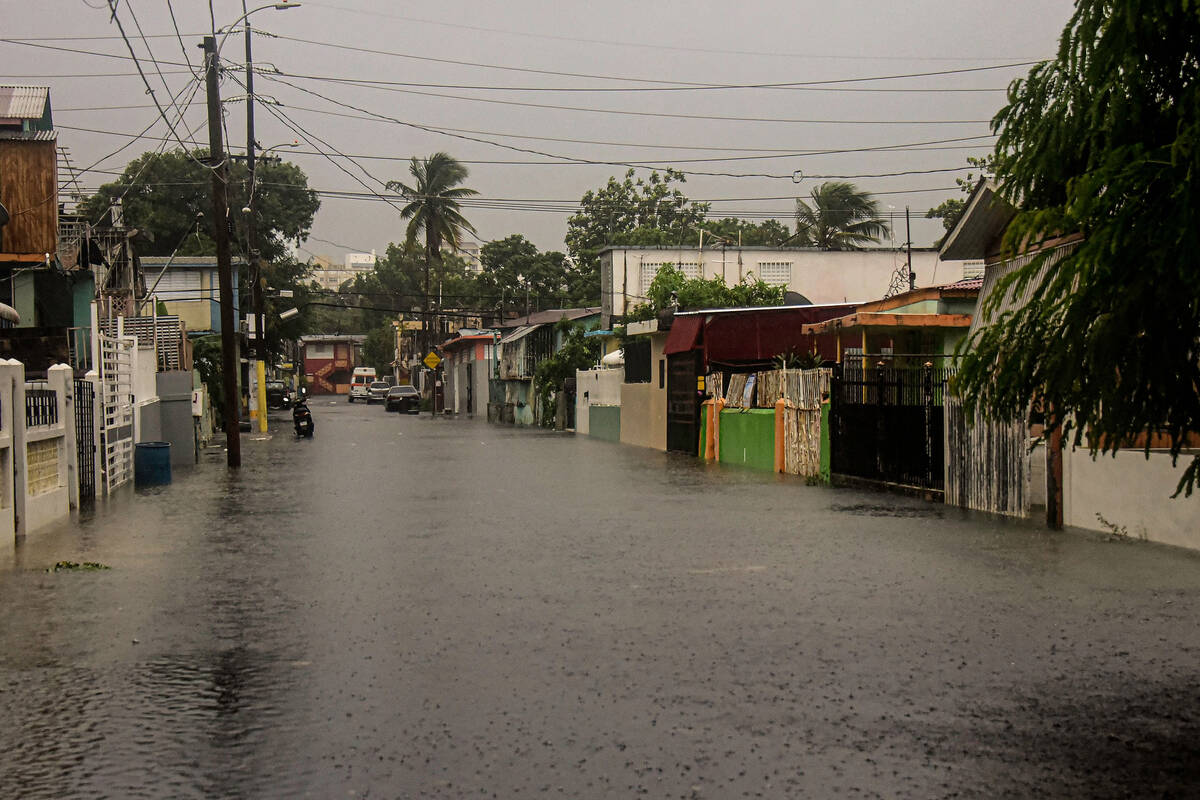Hurricane Fiona leaves 1 dead in Puerto Rico, governor says
Hurricane Fiona left at least one dead and millions without power in Puerto Rico, Gov. Pedro Pierluisi said Monday afternoon, warning that the storm, which poured more than 30 inches of rain in some areas, will continue to soak the island the rest of the day.
“The heavy rains have caused the greatest havoc in our towns. In some of our towns the concentration of water was higher than that of Hurricane Maria,” Pierluisi said at a news conference Monday, referring to the deadly Category 4 hurricane that devastated the island in 2017.
“The damages to the infrastructure, to the urban centers and to residences have been catastrophic,” he said, adding that the country was still experiencing heavy rains and suffering tropical storm conditions, even after the main part of the storm moved away to the Dominican Republic.
Several bridges were severally damaged and some were swept away by flooded rivers, while a number of country roads were also badly damaged by the heavy rains, he said.
Lee-ann Ingles-Serrano, a National Weather Service meteorologist in San Juan, told the Miami Herald that nearly the entire island is under a flash flood warning as of Monday morning, with significant rainfall expected Monday morning and afternoon, worsening flooding in the hardest hit parts of the island in the south.
That area can expect to see another four to six inches of rain, she said.
“We are going to have a more severe flooding problem in areas that are flooded. And areas that are not flooded could flood,” she said.
Between Saturday afternoon and Monday, the southeast of the island had received between 15 and 25 inches of rain. The rest of the island got between 5 and 12 inches.
Several rivers have also overflowed their banks, flooding the communities around them.
Nearly every municipality in the southeast, south, and interior of the island are reporting flooding. Ingles-Serrano said that the mountain town of Cayey and the coastal towns of Guayama and Salinas were among the most affected.
The island could see gusts of 35 miles per hour Monday, which are lower than the hurricane winds that blew through the island over the weekend. But they could cause landslides because of how saturated and vulnerable the terrain is.
Rolando Ortiz, the mayor of Cayey, went on national TV asking for help to save a family with a young daughter.
“There is no way to reach them,” he said.
Through Sunday night, residents of the coastal town of Salinas filled social media with pleas to be rescued. One woman identified as Génesis Lían asked to be rescued on her Facebook page.
“We need help, we need to get out of our houses in Playa de Salinas urgently. I already called emergency management and nothing, I swear I’m swimming and I’m very, very cold. I need to get us out of here, literally the beach is in the house,” she wrote, adding that her group included a minor, a disabled person and an elderly person with diabetes.
On Sunday evening, the island’s state emergency management agency coordinated with the National Guard to send 10 trucks to evacuate several communities in Salinas. Mayor Karilyn Bonilla said on local TV station WAPA that the situation in Salinas was worse than what happened during Hurricane Maria in 2017.
Pierluisi said that there were reports of damage throughout the island, including fallen trees and electric lines, as well as obstructed roads and landslides. Flooding washed away a bridge in Utuado that had been replaced after Hurricane Maria in 2017. He called the storm’s damages “catastrophic.”
Fiona also knocked out the island’s fragile utilities. On Monday morning, the head of the Puerto Rico Aqueducts and Sewer Authority told local media that 750,000 clients don’t have running water.
The storm also left the already fragile electric grid out of service. Hugo Sorrentini, an official with the island’s power utility, LUMA, told the Miami Herald on Monday morning that the private utility operator was doing initial evaluations to assess grid damages.
The company had managed to restore power to 100,000 clients, but he said that number would fluctuate as the situation changed and repairs are made. The company also had five patrols to monitor the transmission lines in hard-to-reach areas.
“Right now, the biggest challenge is that it keeps raining,” he said.
Pedro Labayen, a ham radio operator who oversees the mountain town of Utuado’s community-led emergency radio response, told the Herald that the town, particularly its rural areas, had been “hard hit.”
One family that lives near Dos Bocas had to be rescued after water completely surrounded their home.
The local hospital, municipal and state police and the firefighters were all hooked up to the radio network, Labayen said. And it was through the program that the town’s emergency management officials found out about the rising waters that collapsed one of the town bridges, allowing for the evacuation of nearby residences.
“A lot of landslides, many families that were trapped and had to be rescued in the countryside,” said Labayen. “The emergency management is overstretched.”






















